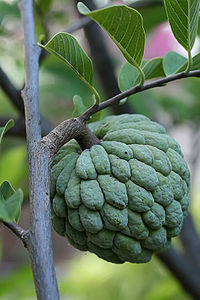
Salinity tolerance during early development of threatened Murray hardyhead ( Craterocephalus fluviatilis ) to guide environmental watering
Sign Up to like & getrecommendations! Published in 2019 at "Aquatic Conservation: Marine and Freshwater Ecosystems"
DOI: 10.1002/aqc.3233
Abstract: The worldwide reduction in wetlands has led to the large‐scale decline of wetland‐dependent species. In Australia, to redress some of the decline, partial restoration of the hydrology of a small number of wetlands has been… read more here.
Keywords: craterocephalus fluviatilis; murray hardyhead; salinity; salinity tolerance ... See more keywords

Digging out molecular markers associated with low salinity tolerance of Nannochloropsis oceanica through bulked mutant analysis
Sign Up to like & getrecommendations! Published in 2019 at "Journal of Oceanology and Limnology"
DOI: 10.1007/s00343-019-9189-3
Abstract: Nannochloropsis oceanica is a marine microalgal species with both economic value and biological importance. It grows fast, contains rich oils, reproduces asexually, holds a small and haploidy genome, and is easy to be modified genetically.… read more here.
Keywords: nannochloropsis oceanica; low salinity; tolerance; analysis ... See more keywords

Phosphorus Increases K+ in the Shoot and Improves Salinity Tolerance in Sweetsop Seedlings
Sign Up to like & getrecommendations! Published in 2021 at "Journal of Plant Growth Regulation"
DOI: 10.1007/s00344-021-10361-y
Abstract: The use of brackish waters is an alternative for the cultivation of fruit-bearing plants in semi-arid regions; nonetheless, sweetsop trees ( Annona squamosa L.) are sensitive to these types of waters. However, phosphate fertilization can… read more here.
Keywords: tolerance sweetsop; phosphorus; sweetsop seedlings; salinity tolerance ... See more keywords

Mapping of a major QTL for salinity tolerance at the bud burst stage in rice (Oryza sativa L) using a high-density genetic map
Sign Up to like & getrecommendations! Published in 2021 at "Euphytica"
DOI: 10.1007/s10681-021-02901-0
Abstract: Salinity tolerance plays an important role in direct seeding cultivation since tolerance to salinity at the bud burst stage of rice directly affects seedling formation and yield. However, information on the quantitative trait loci (QTL)… read more here.
Keywords: burst stage; rice; tolerance; bud burst ... See more keywords

Myo-inositol enhances the low-salinity tolerance of turbot (Scophthalmus maximus) by modulating cortisol synthesis.
Sign Up to like & getrecommendations! Published in 2020 at "Biochemical and biophysical research communications"
DOI: 10.1016/j.bbrc.2020.04.004
Abstract: Myo-inositol is a major intracellular osmolyte that can be accumulated to protect cells from a variety of stresses, including fluctuations in the osmolality of the environment, and cortisol is thought to be an osmotic hormone… read more here.
Keywords: myo inositol; salinity tolerance; low salinity;

Effects of the acclimation to high salinity on intestinal ion and peptide transporters in two tilapia species that differ in their salinity tolerance.
Sign Up to like & getrecommendations! Published in 2018 at "Comparative biochemistry and physiology. Part A, Molecular & integrative physiology"
DOI: 10.1016/j.cbpa.2018.01.004
Abstract: Tilapiine species, widely distributed across habitats with diverse water salinities, are important to aquaculture as well as a laboratory model. The effects of water salinity on two tilapia species, that differ in their salinity tolerance,… read more here.
Keywords: species differ; differ salinity; physiology; salinity ... See more keywords

Salinity tolerance among a large range of bermudagrasses (Cynodon spp.) relative to other halophytic and non-halophytic perennial C4 grasses
Sign Up to like & getrecommendations! Published in 2018 at "Environmental and Experimental Botany"
DOI: 10.1016/j.envexpbot.2017.10.011
Abstract: The increasing demand on potable water has resulted in a greater reliance on poorer quality water, including saline sources, for maintaining forage and turfgrasses in agricultural and urban landscapes. Consequently, it will be crucial to… read more here.
Keywords: tolerance; salinity tolerance; tolerance among; salt tolerance ... See more keywords

Genome-wide transcriptome analysis and physiological variation modulates gene regulatory networks acclimating salinity tolerance in chickpea
Sign Up to like & getrecommendations! Published in 2021 at "Environmental and Experimental Botany"
DOI: 10.1016/j.envexpbot.2021.104478
Abstract: Abstract Salinity is a major abiotic stress that is a global threat to crop production, including chickpea. This study focused on understanding the complex molecular mechanisms underlying salinity tolerance using comparative transcriptome analysis of tolerant… read more here.
Keywords: chickpea; transcriptome analysis; regulatory networks; salinity tolerance ... See more keywords

Diversity and haplotypes of rice genotypes for seedling stage salinity tolerance analyzed through morpho-physiological and SSR markers
Sign Up to like & getrecommendations! Published in 2017 at "Field Crops Research"
DOI: 10.1016/j.fcr.2017.04.006
Abstract: Abstract Rice is sensitive to salinity at seedling and reproductive stages. A wide genetic variation was reported in rice for salinity tolerance, a pre-requisite for any plant breeding programme. In the present study, we have… read more here.
Keywords: rice; salinity; salinity tolerance; concentration ... See more keywords

The AtrbohF‐dependent regulation of ROS signaling is required for melatonin‐induced salinity tolerance in Arabidopsis
Sign Up to like & getrecommendations! Published in 2017 at "Free Radical Biology and Medicine"
DOI: 10.1016/j.freeradbiomed.2017.04.009
Abstract: Abstract Although several literatures confirmed the beneficial roles of exogenous melatonin in the enhancement of salinity tolerance in plants, whether or how endogenous melatonin confers plant salinity tolerance is still elusive. In the report, we… read more here.
Keywords: melatonin; salinity tolerance; atrbohf dependent; salinity ... See more keywords

The recently introduced bivalve Xenostrobus securis has higher thermal and salinity tolerance than the native Brachidontes variabilis and established Mytilopsis sallei.
Sign Up to like & getrecommendations! Published in 2017 at "Marine pollution bulletin"
DOI: 10.1016/j.marpolbul.2017.02.046
Abstract: The recently introduced bivalve Xenostrobus securis and the previously introduced Mytilopsis sallei (~30years) are dominant over the native Brachidontes variabilis in estuarine fouling communities in Hong Kong. This study tested whether these introduced species have… read more here.
Keywords: brachidontes variabilis; tolerance; securis; sallei ... See more keywords